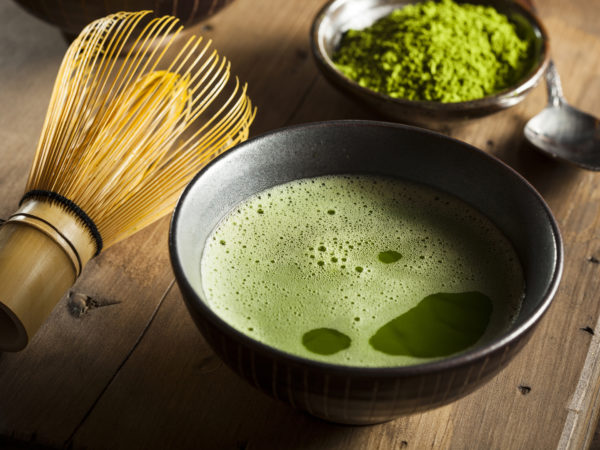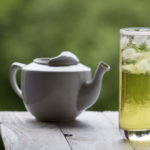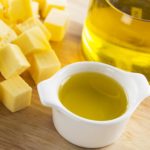Discover Matcha Tea

What is Matcha Tea?
Matcha tea – literally, “powdered tea” – is a special type of green tea: a precious, jewel-green powder that is whisked with hot water in a bowl to make a frothy beverage of the same name. Preparation of matcha tea is the focus of the Japanese tea ceremony and has a long association with Zen. Matcha tea is the only form of tea in which the whole leaf is consumed, and because it is made from top-quality leaves that are treated with great care, it delivers more of the healthful elements of green tea than other forms. A unique, beautiful and richly flavorful drink, matcha tea gives most people a feeling of well-being. In addition, the simple ritual of preparing it is both enjoyable and meditative.
For matcha tea, unlike most other forms of green tea, farmers cover the plants with heavy shade cloth for three weeks prior to harvest in May. This causes the new shoots to develop larger, thinner leaves with better flavor and texture. Harvesting is by hand, and only the youngest, smallest leaves are selected for the best quality matcha. Farmers steam the leaves briefly to stop any fermentation, then dry them and pack them in bales for cold storage. Aging deepens the flavor of the tea, which becomes optimum after six months.
Healing Benefits of Matcha
In addition to providing trace minerals and vitamins (A, B-complex, C, E, and K), matcha tea is rich in catechin polyphenols – compounds with high antioxidant activity. These compounds offer protection against many kinds of cancer, help prevent cardiovascular disease and slow the aging process. They also reduce harmful cholesterol in the blood, stabilize blood sugar levels, help reduce high blood pressure and enhance the resistance of the body to many toxins. The most important polyphenol in matcha is EGCG (epigallo-catechin gallate), which is the subject of many medical studies. Matcha tea has a significant amount of dietary fiber and practically no calories.
Watch a video clip on how to prepare matcha tea.










